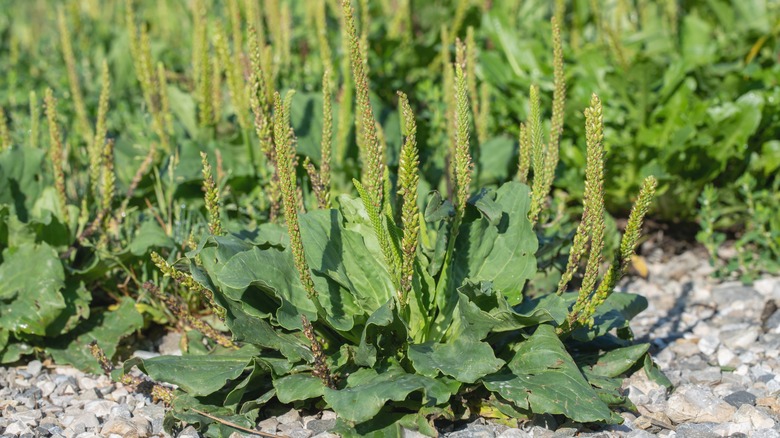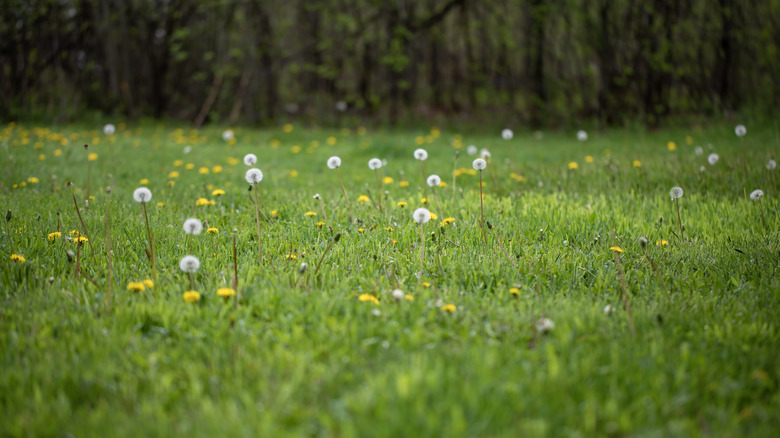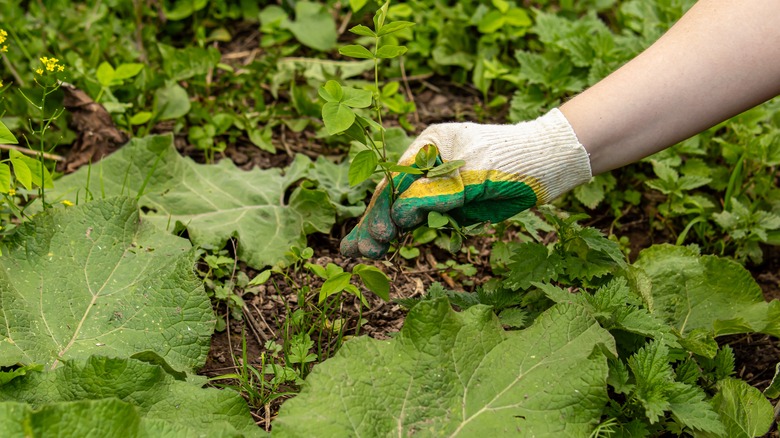How To Identify And Get Rid Of Broadleaf Weeds In Your Yard Or Garden
We may receive a commission on purchases made from links.
Broadleaf weeds are essentially a category of unwanted plants that have wider leaves on average compared to thin blades of grass. They can appear in various forms, from dandelions and clover to plantain and chickweed. These weeds are incredibly resilient and can thrive in various different conditions, often popping up in lawns, flower beds, and vegetable gardens. The key to managing broadleaf weeds is understanding their growth patterns and the environments where they will continue to flourish.
Most broadleaf weeds grow in nutrient-rich soil and areas that receive lots of moisture. This means that if your yard has bare spots or is over-fertilized then you may be unintentionally inviting these opportunistic plants into your space. While dealing with weeds can often seem overwhelming, the first step to effective control is through identification so you can use the most effective techniques to get rid of them.
There are dozens of different broadleaf weeds in all shapes and sizes, but generally, you're looking for fast-growing plants with wide leaves. Getting rid of them involves a mix of manual removal and using herbicides. Now, let's dig a little deeper into the process of identifying specific broadleaf weeds and the removal process.
Identifying broadleaf weeds
Identifying broadleaf weeds is pretty straightforward once you know what you're looking for. These weeds usually have flat, wide leaves that can take various shapes, from round to heart-shaped or lobed. Common types of garden weeds that are classified as broadleaf include dandelion, knotweed, red clover, chickweed, and sheep sorrel. Dandelions are one of the most recognizable weeds, featuring jagged, bright green leaves and yellow flowers that transform into fluffy seed heads. They often pop up in lawns and disturbed areas, making them a frequent nuisance for gardeners.
Clover, with its characteristic three-leaf clusters (or four if you're lucky!), comes in both white and red varieties. It thrives in compacted, low-nitrogen soil and tolerates a wider pH range than grass. Chickweed is another troublemaker; this low-growing weed has small, oval leaves and spreads quickly across the ground, particularly in cooler temperatures. Lastly, plantain displays broad, ribbed leaves that grow in a rosette formation, showcasing its ability to tolerate drought and poor soil.
When inspecting your garden, pay attention to the leaf shape, size, and growth habit. You can also use apps or guides for plant identification to help you pinpoint the weeds in your yard. Once you've identified them, you can move on to the next crucial step: getting rid of them for good!
Getting rid of broadleaf weeds
Now that you know how to identify broadleaf weeds, it's time to tackle the problem. There are several methods to effectively eliminate these unwanted plants, and the right approach will depend on how severe the infestation is, along with your gardening philosophy. For small infestations, hand-pulling can be an effective solution. Make sure to remove the entire root to prevent regrowth, and this method works best when the soil is moist, making it easier to pull the weeds out.
Applying a layer of mulch around your plants can prevent weed seeds from germinating by blocking sunlight. When choosing the best type of mulch, organic mulches, like wood chips or straw, can also improve soil quality as they decompose. If the infestation is more severe, consider using herbicides. Look for selective herbicides that target broadleaf weeds while leaving your grass and flowers unharmed, such as the Natural Elements Weed Killer. Always follow the application instructions carefully to minimize harm to desirable plants.
As a substitute for weed killer, natural herbicides containing vinegar can also be effective. While they may not be as potent as commercial products, they can still help control smaller weeds without harming the environment. Preventing broadleaf weeds from taking over your garden starts with regular maintenance. Mowing your lawn regularly, watering deeply but less frequently, and keeping your garden well-aerated are all essential steps. A healthy garden is less susceptible to weed invasions, making it easier to keep your outdoor space thriving.


